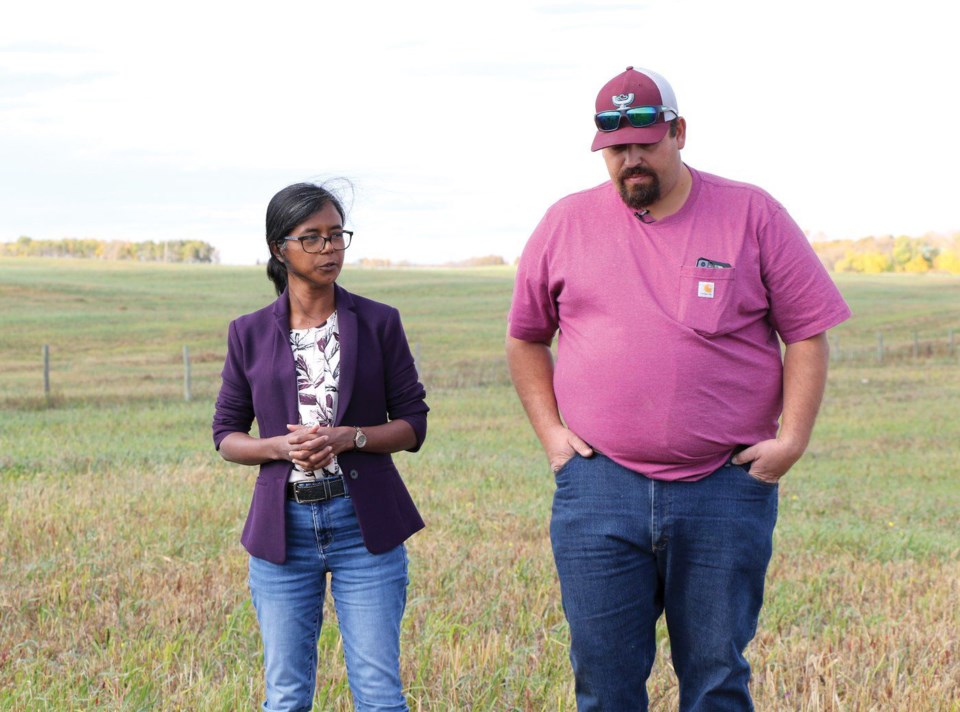WAPELLA — A group of local producers came out recently to attend a tour and information session on polycropping’s role in carbon sequestration at the Knutson Ranch in Wapella.
The event was organized by the 小蓝视频 of the Divide Conservation Action Program (SODCAP) and Living Lab - Central Prairies.
The day included a farm tour at the Adam Knutson Ranch, followed by a presentation by Dr. Bart Lardner from the University of Saskatchewan, and an overview of producers’ experiences using polycropping, at the Moosomin Legion for the remainder of the day.
“It’s always good to have educational events like this just to showcase what other people are doing in other parts of the province,” said Bridget Andrews, executive director for the Saskatchewan Association of Watersheds.
“With regards to cover cropping and how to improve soil health, as well as increase carbon sequestration, reduce carbon greenhouse gas emissions, and be more efficient on the land.
“As well, just seeing how you can duplicate what other people are doing to make it better on your own farm.”
The reason the educational event was held in Wapella was because Adam Knutson and his family are partners in the Living Lab project with Agriculture and Agri-Food Canada, along with SODCAP.
“Adam’s farm is a partner in the program. This will be a five-year project and over the next five years they’ll be looking at soil health, nutrients, all of those things,” said Andrews.
“It’s linking academics and science to producers on the ground who are taking that information and making their farms better.”
One of the speakers at the event, Dr. Bart Lardner from the University of Saskatchewan, spoke about what his past and current research of polycropping entails.
“It’s probably been 30 years now since I’ve been involved in the cow-calf and forage research,” said Lardner.
“In my mind, it’s all about intercropping and involving the cropping sector and the livestock sector.
“We’ve been doing a lot of work looking at utilizing extensive and different ways for swath grazing and bale grazing.
“We’re also looking at production efficiencies, and different systems for what’s best for the producer.
“In the last eight years, my program shifted to the environmental aspect. We’re looking at the different interactions between the soil, the plant, the animal, and now the environment.
“We’re measuring with our colleagues, the soil scientists, what’s happening below ground. We’re looking at it with some microbiologists, in terms of soil.
“We’re also looking at the pros of having an animal grazing on an acre of land. The nutrient cycling aspect of what’s coming out the back, in terms of new nutrients, as well as what are the gasses that are coming out the front door.”
At the event, Trevor and Cindy Green of Moosomin also shared their experiences of the different challenges and opportunities they found when partaking in polycropping.




